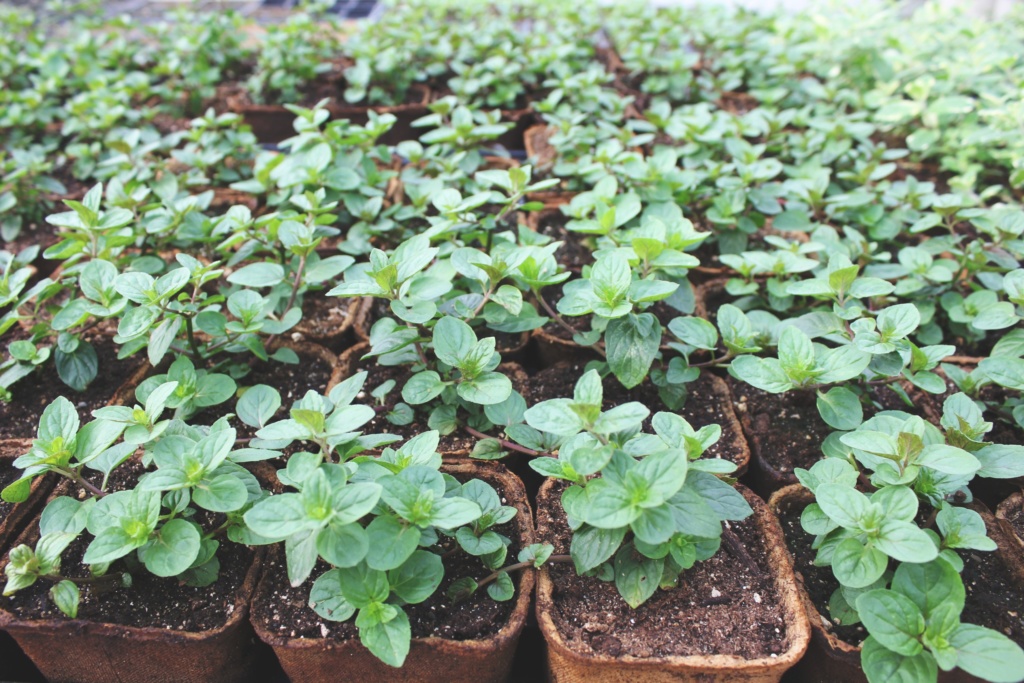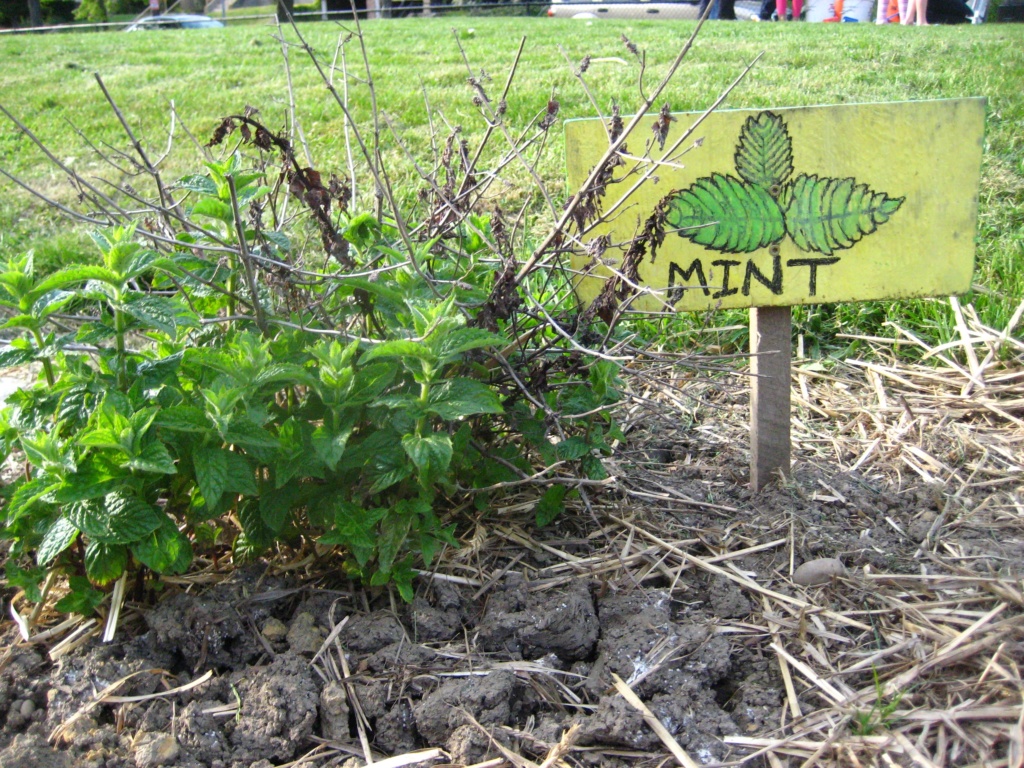Check in weekly, on Wednesdays, to read our new post on gardening, harvesting, and making use of that fine, extra-local produce! We’ll share tips and techniques, gleaned from our urban farms and gardens. Email info@growpittsburgh.org with any topics you’d like us to cover.
Mint can be an especially rewarding plant to grow in the garden. It’s a versatile herb, with plenty of flavors and uses, and it’s a perennial, which means it comes back every year. It grows lush and spreads in a variety of environments…and there lies its downfall too! Mint can quickly take over and spread to areas where it’s not wanted.
Mint spreads primarily by rhizomes, which means by the roots. As the roots spread, they sprout a stems and leaves and eventually become their own plants. So to keep the mint plant from spreading all over the garden, the roots need to be contained.
Growing Conditions
Unlike most of its vegetable and herb counterparts, mint can grow in full sun or in partial shade. So choosing a partially shady location can help you make use of an area that otherwise wouldn’t be a great spot for edible gardening. Mint prefers to have “wet feet,” so keep it well-watered and mulch to retain soil moisture. Like most edible plants, mint prefers fertile soil.
Growing methods
So, what are the best ways to grow mint without it taking over the garden? Here are a few tips:
- Plant in a container. Mint, like most herbs, grows well in a container. You can bring the pot in over the winter, or leave outside in a protected area, as mint is very hardy. (Be aware that terra cotta will begin to disintegrate if left out over the winter.) Every couple of years, the mint will need to be removed from the container and divided, as the roots will begin to take up the entire pot.
- Cut the bottom out of a container, sink it into the ground, and plant mint inside it. This method simply creates a barrier all around the plant, limiting its growth. Be sure to check in occasionally to trim back any stems that might be lying on the ground, forming roots outside of the container.
- Plant mint in a separate section of the garden that is surrounded by barriers. A barrier could be lawn (some mint may spread into a lawn but thick grass will usually keep mint at bay), sidewalk, patio, deep shade, sand, gravel, a sunken plastic or wooden bed edging.
It’s also important to note that mint should be obtained as a plant, rather than as seeds. Mint may not “come true,” or be the type you were hoping for if you grow it from seed.
Varieties and Uses
Mint is used to flavor foods and beverages and is used medicinally to treat digestive woes. Mints fall into two main culinary groups:
Spearmint has a milder flavor and is used often in culinary dishes as well as in beverages, tea, and to flavor gum. These mints are in the spearmint family:
- Spearmint
- Apple mint
- Pineapple mint
- Curly mint
- Smooth leaf mint
Peppermint has a strong, intense flavor, as it contains menthol. It’s used to flavor candies like candy canes, as well as to make peppermint tea and breath mints. These mints are in the peppermint family:
- Peppermint
- Chocolate mint
- Orange mint
- Ginger mint
- Grapefruit mint
Harvesting Mint
After the plant has become established in its location (it should have several new stems or increased in size since planting), simply trim the stems to harvest usable mint. Think of harvesting as pruning; at the location where you clip the stem, the plant will develop new, branching stems. Mint that is flowering can be harvested and used but won’t have the same intensity of flavor. To harvest mint for garnishes, trim the very top clusters of leaves from the plant.
Recipes
Fresh Peppermint Tea
Fresh Mint Chocolate Chip Cookies


